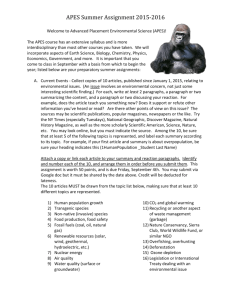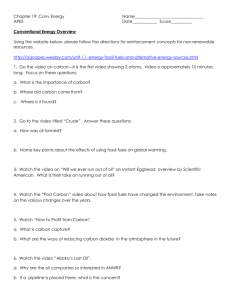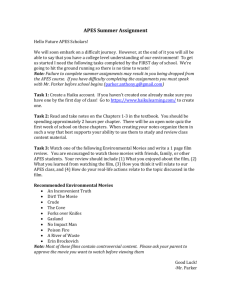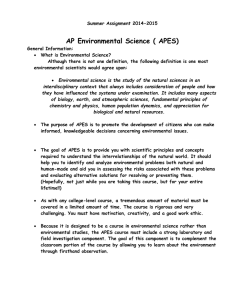B O O K R E V I E W...
advertisement
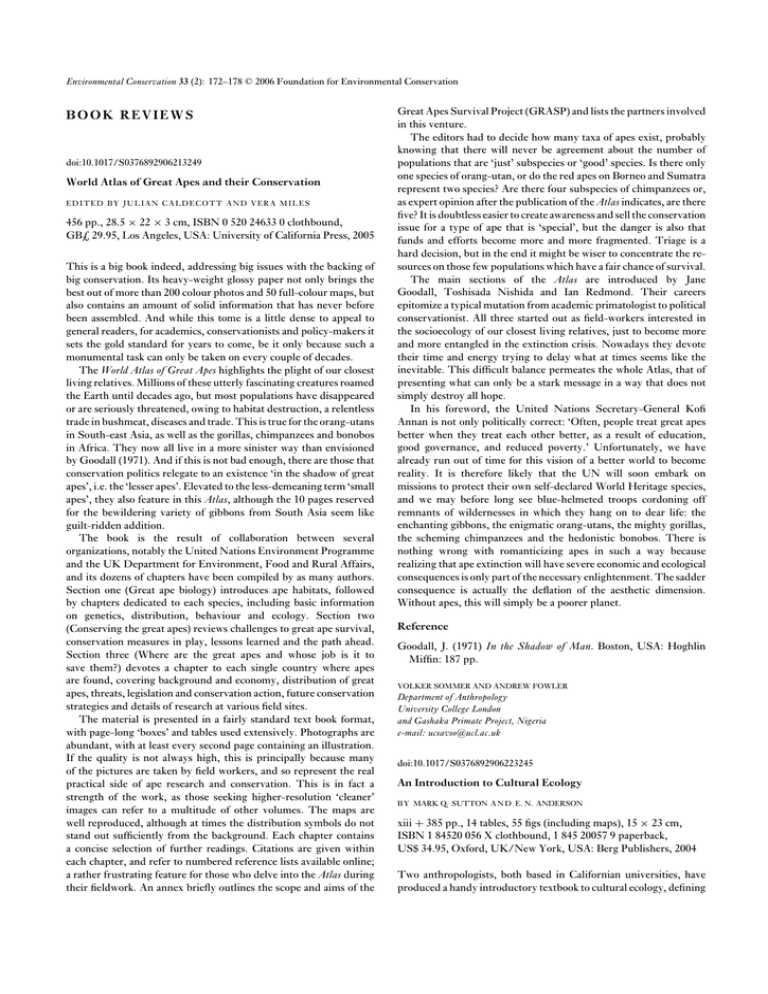
Environmental Conservation 33 (2): 172–178 © 2006 Foundation for Environmental Conservation BOOK REVIEWS doi:10.1017/S0376892906213249 World Atlas of Great Apes and their Conservation EDITED BY JULIAN CALDECOTT AND VERA MILES 456 pp., 28.5 × 22 × 3 cm, ISBN 0 520 24633 0 clothbound, GB£ 29.95, Los Angeles, USA: University of California Press, 2005 This is a big book indeed, addressing big issues with the backing of big conservation. Its heavy-weight glossy paper not only brings the best out of more than 200 colour photos and 50 full-colour maps, but also contains an amount of solid information that has never before been assembled. And while this tome is a little dense to appeal to general readers, for academics, conservationists and policy-makers it sets the gold standard for years to come, be it only because such a monumental task can only be taken on every couple of decades. The World Atlas of Great Apes highlights the plight of our closest living relatives. Millions of these utterly fascinating creatures roamed the Earth until decades ago, but most populations have disappeared or are seriously threatened, owing to habitat destruction, a relentless trade in bushmeat, diseases and trade. This is true for the orang-utans in South-east Asia, as well as the gorillas, chimpanzees and bonobos in Africa. They now all live in a more sinister way than envisioned by Goodall (1971). And if this is not bad enough, there are those that conservation politics relegate to an existence ‘in the shadow of great apes’, i.e. the ‘lesser apes’. Elevated to the less-demeaning term ‘small apes’, they also feature in this Atlas, although the 10 pages reserved for the bewildering variety of gibbons from South Asia seem like guilt-ridden addition. The book is the result of collaboration between several organizations, notably the United Nations Environment Programme and the UK Department for Environment, Food and Rural Affairs, and its dozens of chapters have been compiled by as many authors. Section one (Great ape biology) introduces ape habitats, followed by chapters dedicated to each species, including basic information on genetics, distribution, behaviour and ecology. Section two (Conserving the great apes) reviews challenges to great ape survival, conservation measures in play, lessons learned and the path ahead. Section three (Where are the great apes and whose job is it to save them?) devotes a chapter to each single country where apes are found, covering background and economy, distribution of great apes, threats, legislation and conservation action, future conservation strategies and details of research at various field sites. The material is presented in a fairly standard text book format, with page-long ‘boxes’ and tables used extensively. Photographs are abundant, with at least every second page containing an illustration. If the quality is not always high, this is principally because many of the pictures are taken by field workers, and so represent the real practical side of ape research and conservation. This is in fact a strength of the work, as those seeking higher-resolution ‘cleaner’ images can refer to a multitude of other volumes. The maps are well reproduced, although at times the distribution symbols do not stand out sufficiently from the background. Each chapter contains a concise selection of further readings. Citations are given within each chapter, and refer to numbered reference lists available online; a rather frustrating feature for those who delve into the Atlas during their fieldwork. An annex briefly outlines the scope and aims of the Great Apes Survival Project (GRASP) and lists the partners involved in this venture. The editors had to decide how many taxa of apes exist, probably knowing that there will never be agreement about the number of populations that are ‘just’ subspecies or ‘good’ species. Is there only one species of orang-utan, or do the red apes on Borneo and Sumatra represent two species? Are there four subspecies of chimpanzees or, as expert opinion after the publication of the Atlas indicates, are there five? It is doubtless easier to create awareness and sell the conservation issue for a type of ape that is ‘special’, but the danger is also that funds and efforts become more and more fragmented. Triage is a hard decision, but in the end it might be wiser to concentrate the resources on those few populations which have a fair chance of survival. The main sections of the Atlas are introduced by Jane Goodall, Toshisada Nishida and Ian Redmond. Their careers epitomize a typical mutation from academic primatologist to political conservationist. All three started out as field-workers interested in the socioecology of our closest living relatives, just to become more and more entangled in the extinction crisis. Nowadays they devote their time and energy trying to delay what at times seems like the inevitable. This difficult balance permeates the whole Atlas, that of presenting what can only be a stark message in a way that does not simply destroy all hope. In his foreword, the United Nations Secretary-General Kofi Annan is not only politically correct: ‘Often, people treat great apes better when they treat each other better, as a result of education, good governance, and reduced poverty.’ Unfortunately, we have already run out of time for this vision of a better world to become reality. It is therefore likely that the UN will soon embark on missions to protect their own self-declared World Heritage species, and we may before long see blue-helmeted troops cordoning off remnants of wildernesses in which they hang on to dear life: the enchanting gibbons, the enigmatic orang-utans, the mighty gorillas, the scheming chimpanzees and the hedonistic bonobos. There is nothing wrong with romanticizing apes in such a way because realizing that ape extinction will have severe economic and ecological consequences is only part of the necessary enlightenment. The sadder consequence is actually the deflation of the aesthetic dimension. Without apes, this will simply be a poorer planet. Reference Goodall, J. (1971) In the Shadow of Man. Boston, USA: Hoghlin Miffin: 187 pp. VOLKER SOMMER AND ANDREW FOWLER Department of Anthropology University College London and Gashaka Primate Project, Nigeria e-mail: ucsavso@ucl.ac.uk doi:10.1017/S0376892906223245 An Introduction to Cultural Ecology B Y MARK Q. SUTTON A N D E. N. ANDERSON xiii + 385 pp., 14 tables, 55 figs (including maps), 15 × 23 cm, ISBN 1 84520 056 X clothbound, 1 845 20057 9 paperback, US$ 34.95, Oxford, UK/New York, USA: Berg Publishers, 2004 Two anthropologists, both based in Californian universities, have produced a handy introductory textbook to cultural ecology, defining

